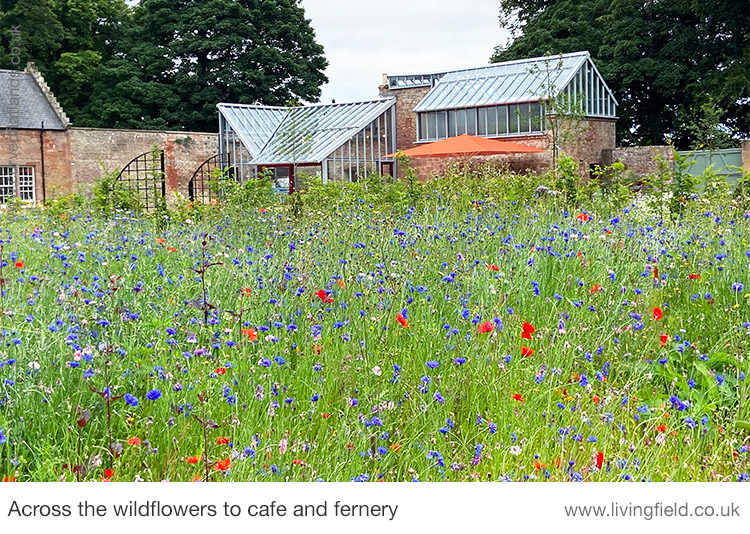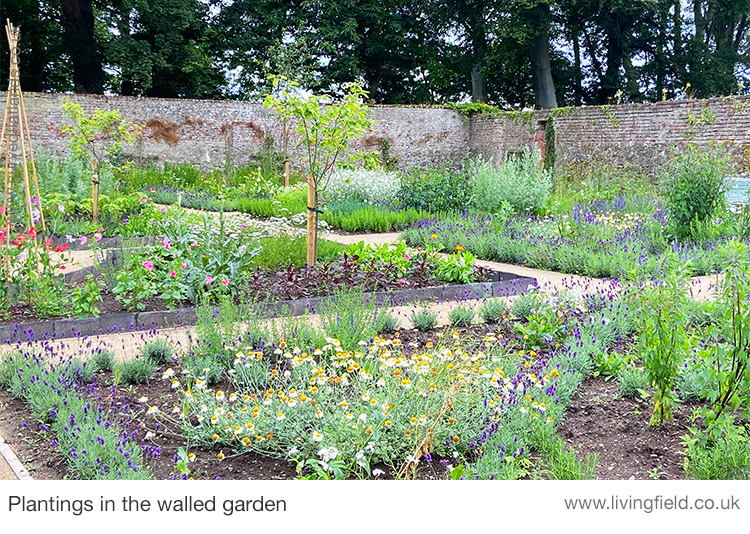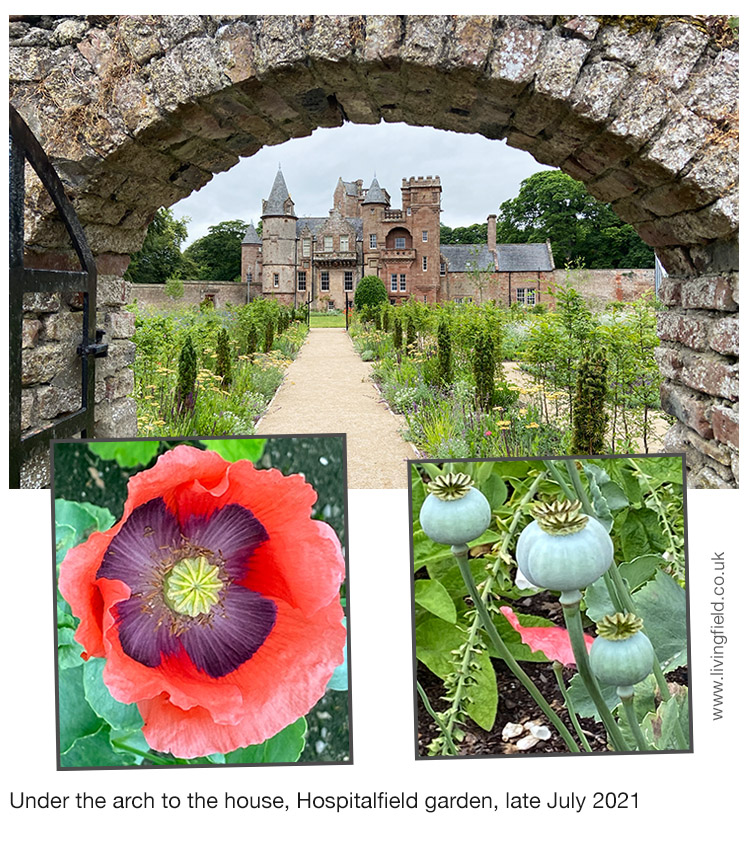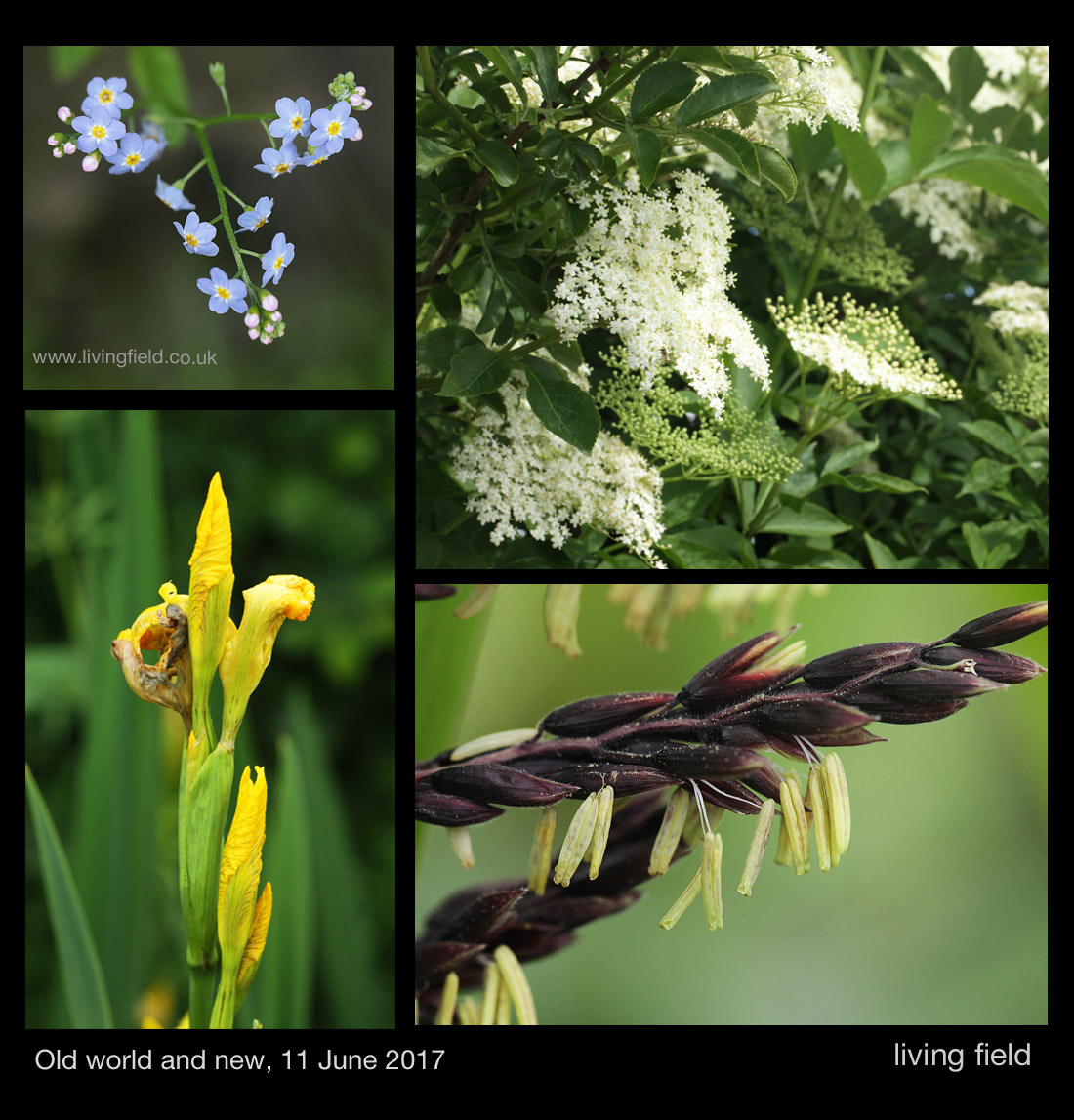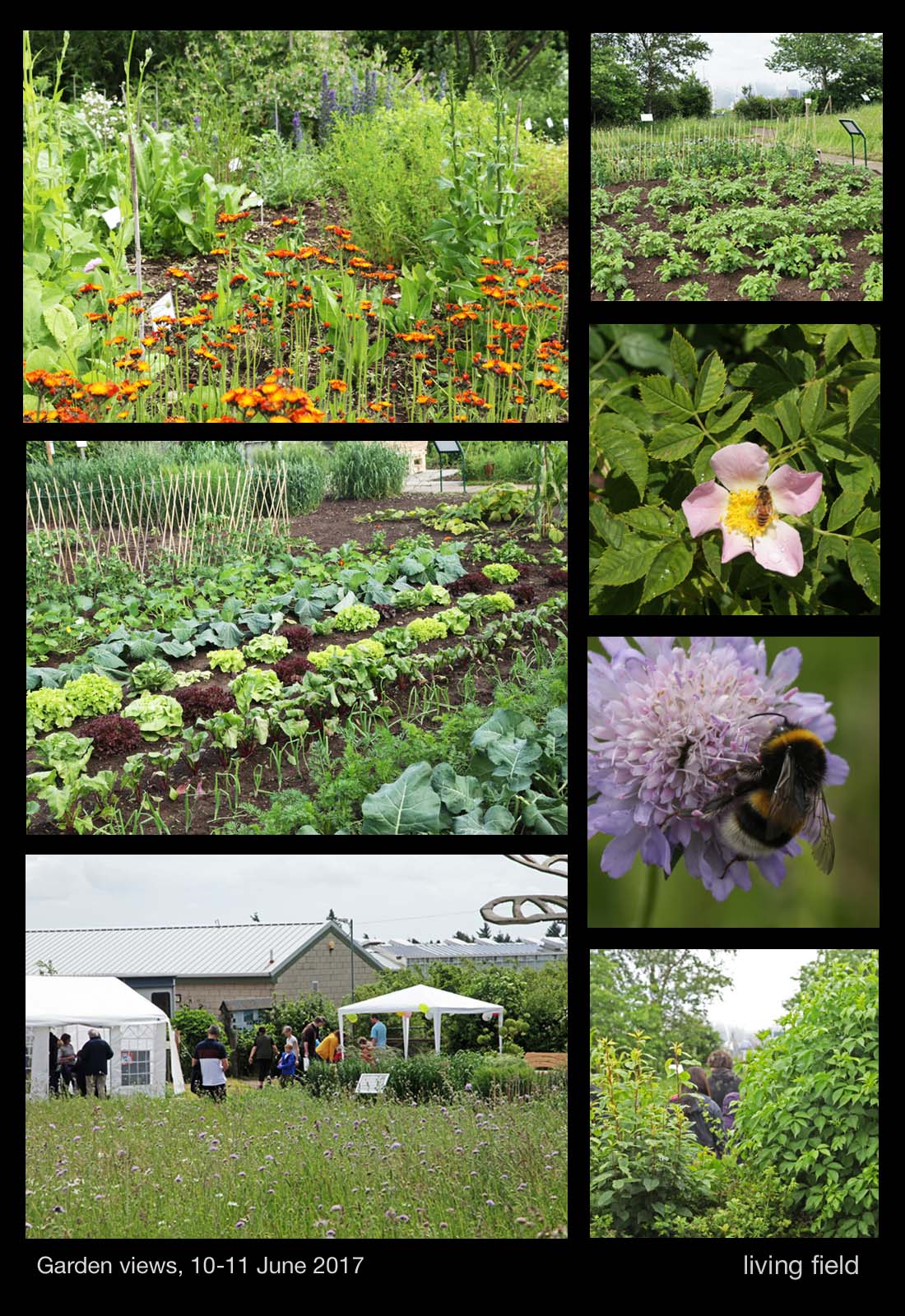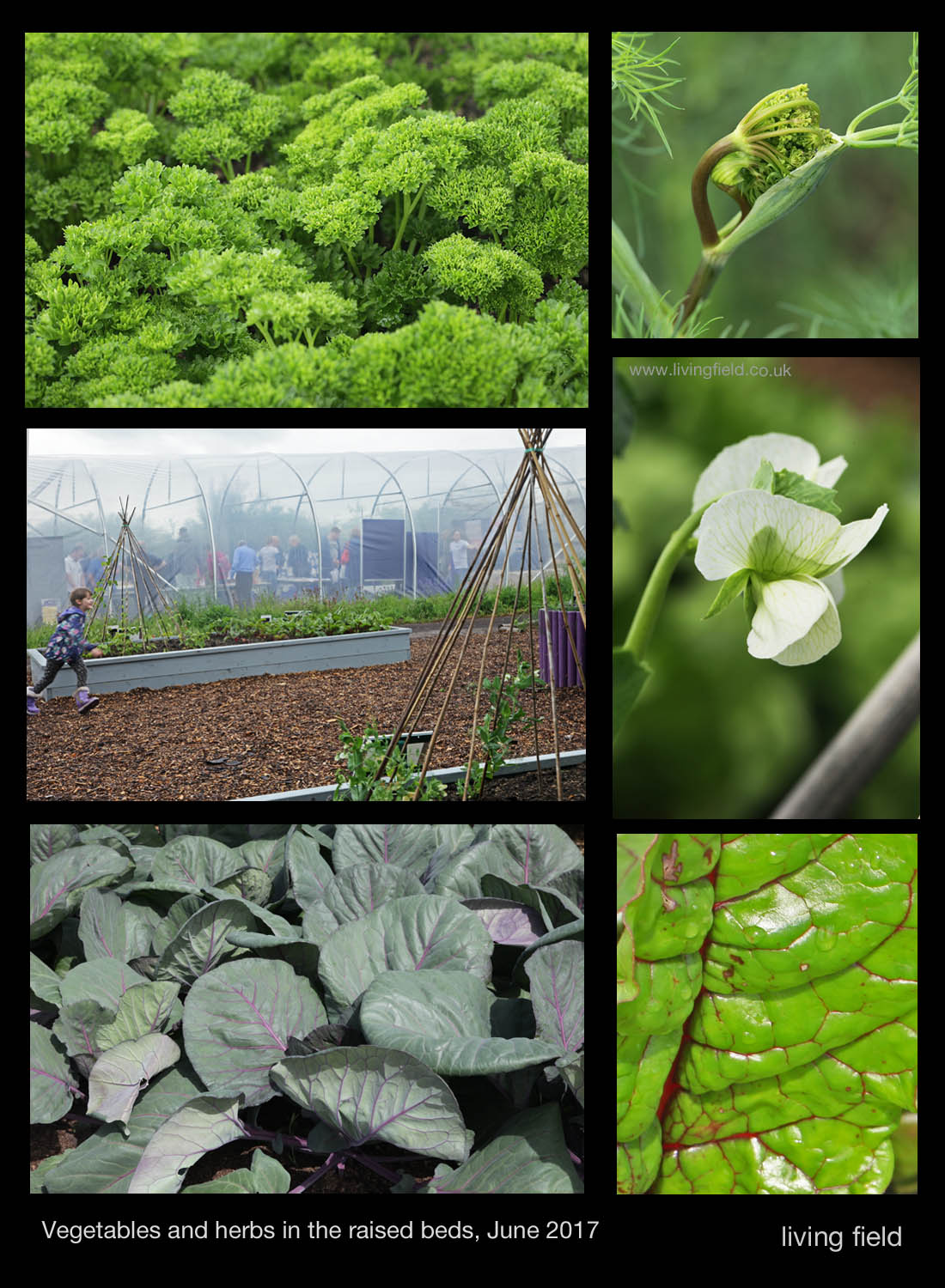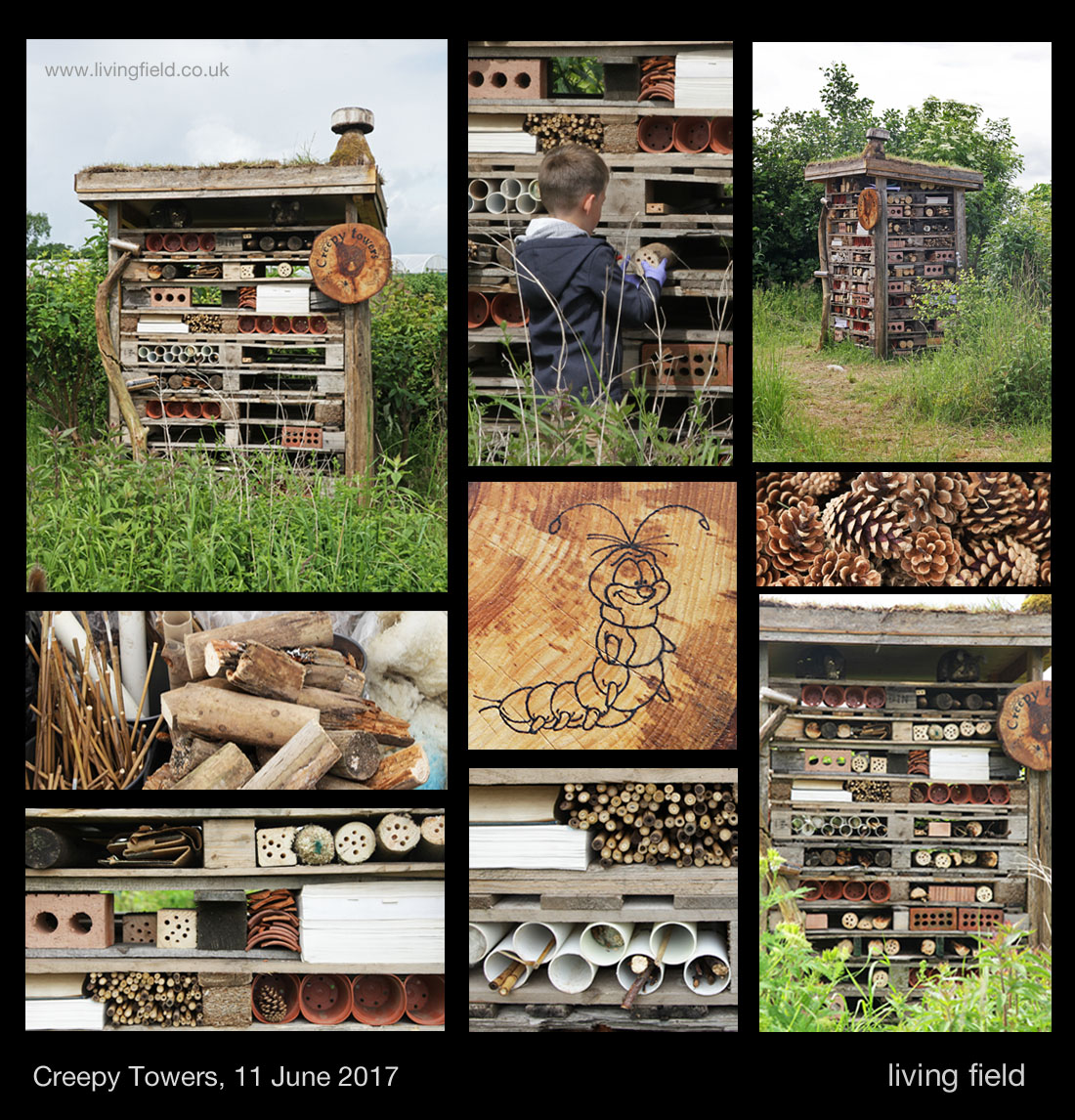The renewed walled garden at Hospitalfield, Arbroath. Monks and medicinals. Artists and gentry. Now community art, a great diversity of plants and a welcoming place to relax.
The Living Field’s experience with medicinal plants led to an invitation to talk about the history and present uses of plants for health and healing at the Beer and Berries Festival to be held at Hospitalfield on 21 August 2021.
The old walled garden there has been re-designed and replanted. It’s had a history from 1260 when Hospitalfield was founded, some time after monks from Kelso Abbey in the Scottish Borders travelled north to establish Arbroath Abbey.
Given all this history and the clear success of the new plantings visible on the Hospitalfield web site [1], it was timely to see the garden first hand before sharing knowledge of medicinals.
A great diversity of plants
In late July 2021, the walled garden nurtured hundreds of flowering species (and some yet to flower), some native to the region but many from Mediterranean and even sub-tropical climatic regions – a great range of textures and exotic smells, teeming with bees and other insects.
Some of the original medicinals recorded from the 1200s had been planted, but also notable species from later in the garden’s history. Their story is related, with drawings, in a book by Laura Darling [2] describing the garden’s history, published this year.
Beer and Berries Festival August 2021
The festival of Beer and Berries will be held at Hospitalfield on 21 August 2021. From the web site [3]: “It’s the height of summer and Angus is bursting with fruit and full of grain …
” Beer and Berries is a “regional festival showcase, connecting food and drink producers and suppliers to buyers and customers, set alongside a programme of talks, workshops, events and music.”
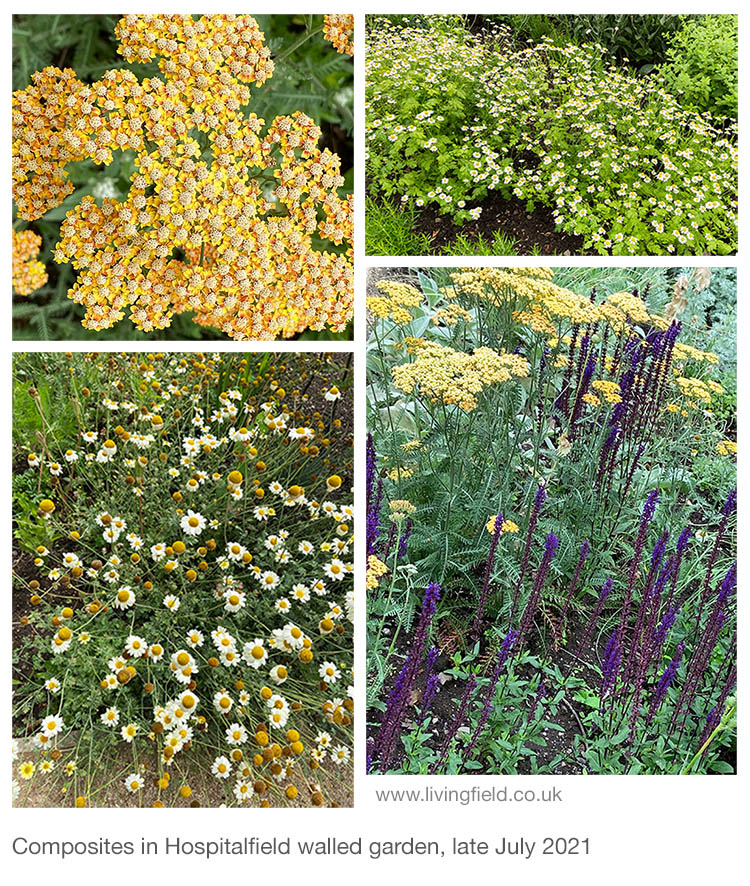
Hospitalfield garden is a gem of a place, where art, horticulture and science come together.
Thanks to Laura Mansfield, for the original invitation to contribute to Beer and Berries, Gillian Stirton from the Hutton communications unit for suggesting the Living Field’s input, and Kate Robinson, head gardener, for correspondence on native and introduced medicinal plants in Scotland.
Author / contact: geoff.squire@hutton.ac.uk or geoff.squire@outlook.com
Sources | links
[1] Hospitalfield at https://hospitalfield.org.uk/
[2] Darling, Laura. 2021. In the garden at Hospitalfield. Published by Hospitalfield, Arbroath, Angus.
[3] Beer and Berries Festival, 21 August 2021 – booking essential: https://hospitalfield.org.uk/visit/events/beer-berries-2021/

